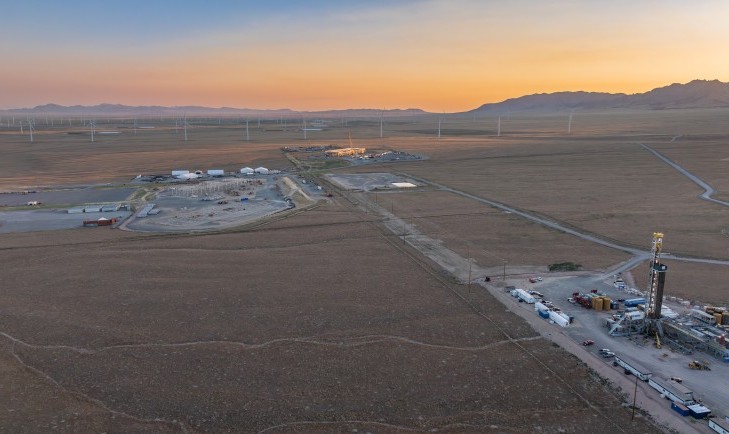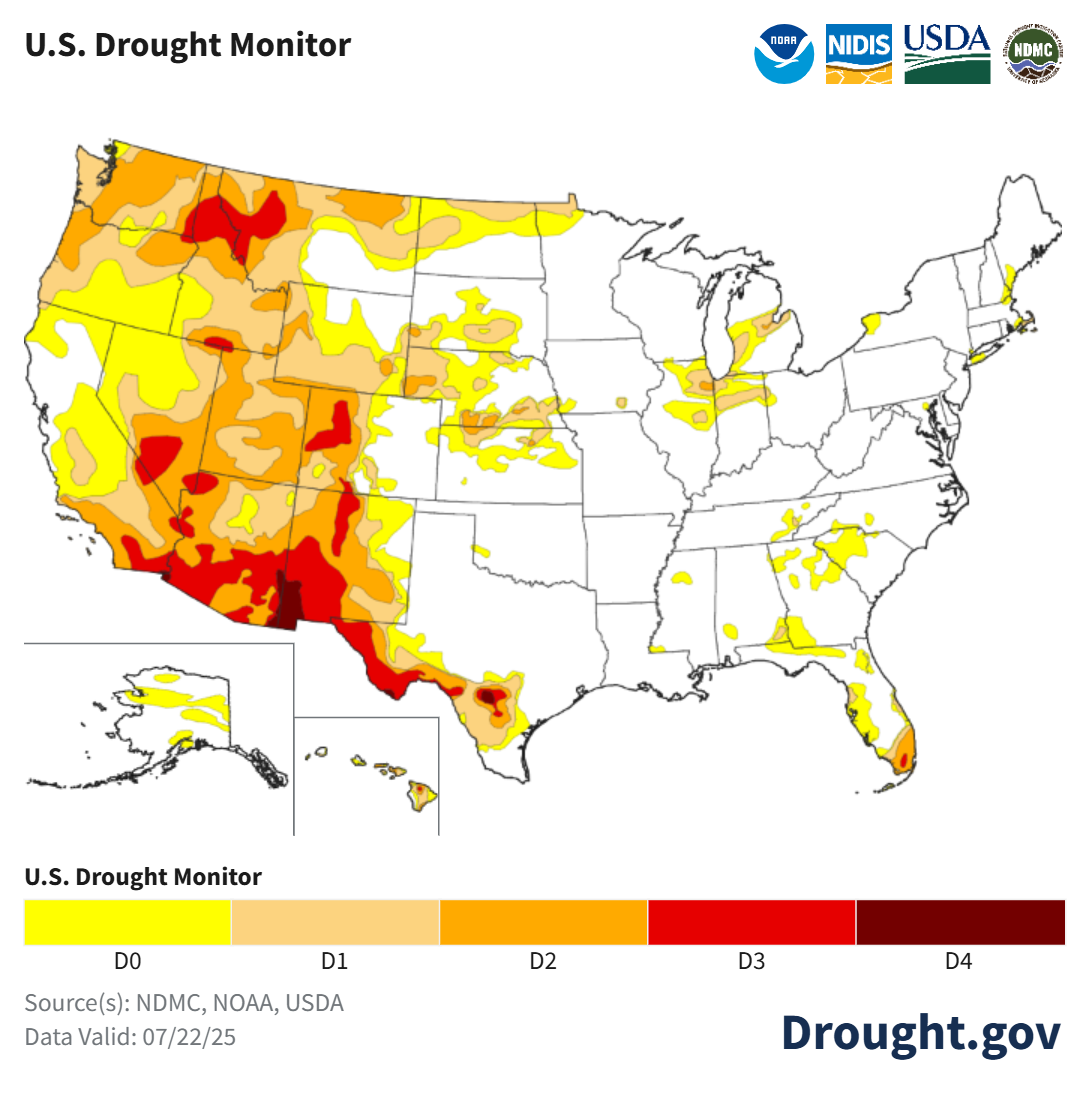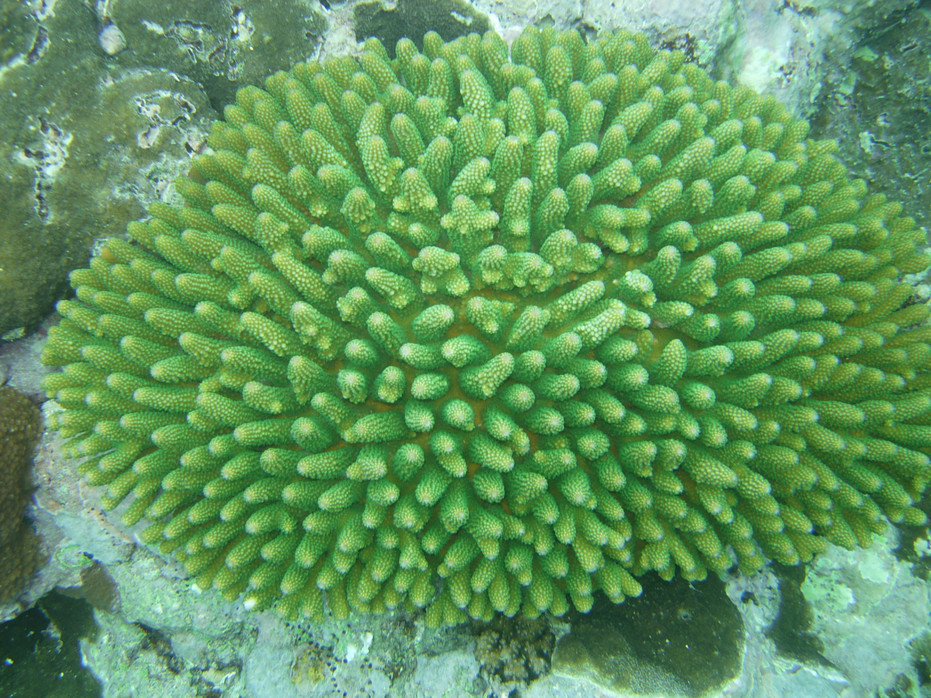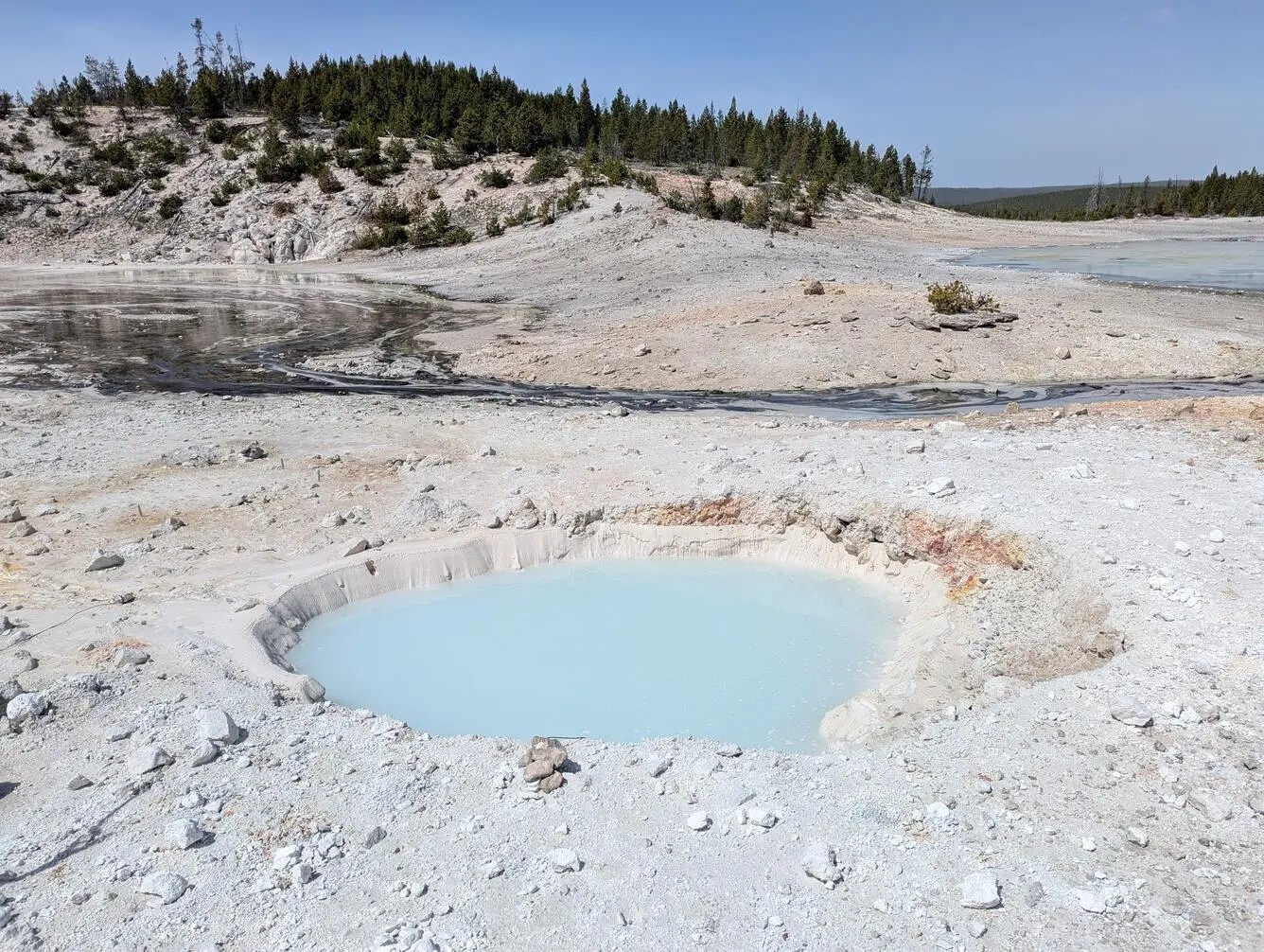07/24/25
Best of the West: Geothermal leases; Redefining drought; Critical ocean habitat; Watershed restoration; and Yellowstone’s new thermal pool

The Western Governors' Association keeps you updated on the latest news in the West. Here are the top stories for the week starting July 21, 2025. (Photos courtesy of Fervo Energy, NIDIS, Douglas Fenner/NOAA Fisheries, Mike Poland/U.S. Geological Survey).
This week, the Bureau of Land Management (BLM) leased two parcels in Malheur County, Oregon, for geothermal exploration. Totaling 5,235 public acres, the leases sold for $430,518 – an average of $82 per acre – marking the highest price per acre from a geothermal lease on BLM land in Oregon.
The Oregon auction came on the heels of another record-breaking geothermal lease sale in Utah, which took place on April 9. The Utah auction attracted $5.6 million in bids for 14 parcels on 50,961 acres of federal land. Like the Oregon auction, it set a record for the highest price per acre ($111.46) for a geothermal lease on BLM land in Utah.
The companies that secured the BLM parcels in Utah are Buffalo River Minerals LLC, which purchased leases for six parcels; Percheron Professional Services LLC, which purchased leases for four parcels; Invenergy Geothermal Development LLC, which purchased leases for two parcels; and Umbrella Renewables LLC, which purchased a lease for one parcel.
With a clear directive from President Trump (Executive Order 14154) and Secretary of Energy Chris Wright (Secretarial Order) to prioritize geothermal energy, BLM is looking to build upon this momentum by holding two more public auctions for geothermal leases.
The BLM California State Office will hold a competitive geothermal lease sale on Tuesday, August 26, offering 13 parcels for a total of 23,000 acres across Imperial, Lassen, and Modoc counties. The parcels can be viewed at the BLM National NEPA Register at the El Centro Field Office and Applegate Field Office.
The BLM Idaho State Office will hold a competitive geothermal lease sale on September 9, offering nine parcels for a total of 20,615 acres in Elmore and Washington counties, and 3,740 acres in Bonneville County. More information is available on the respective NEPA pages of the Four Rivers Field Office (covering eight parcels in Elmore and Washington counties) and the Pocatello Field Office (covering one parcel in Bonneville County).
Both the California and Idaho auctions will be held online via EnergyNet.
Another geothermal lease sale in Idaho is planned for December 2, 2025, though exact details have yet to be released.
In the meantime, the BLM New Mexico State Office is now accepting nominations of lands for a geothermal lease sale that is tentatively scheduled for March 2026. All nominations must be received by September 25.
All of the BLM geothermal leases are good for an initial 10-year period, allowing the lessee to explore for and develop potential geothermal resources. They may be extended if the lessee establishes production or provides proof of diligent exploration.
In other geothermal news, BLM recently approved the 30-megawatt Crescent Valley geothermal energy production facility and associated transmission line in Nevada. The project includes the construction and operation of one power plant, a photovoltaic solar field, 17 additional geothermal fluid production and injection wells and well pads, new and improved access roads, an aggregate pit, geothermal fluid pipelines, an electrical gen-tie line, a substation, a switching station, and ancillary support facilities.
BLM specifically cited Trump’s Executive Order 14154 in its approval of the Crescent Valley project.
“Geothermal projects support domestic energy production and American energy independence, while contributing to the nation’s economy and security,” BLM wrote in a statement about the approval. “Consistent with Executive Order 14154, ‘Unleashing American Energy,’ the geothermal projects on public lands help meet the energy needs of U.S. citizens, will solidify the nation as a global energy leader long into the future, and achieve American Energy Dominance.”
To learn more about strategies for advancing geothermal energy, read the special report from Colorado Governor Jared Polis’ WGA Chair initiative, The Heat Beneath Our Feet, or by listening to two of WGA’s Out West podcast episodes: The Heat Beneath Our Feet: Exploring the Potential of Geothermal Energy with Colorado Governor Jared Polis or The Well of the Future: Repurposing Oil and Gas Wells for Geothermal Energy Production.
 Redefining Drought: Drought is often defined as “drier-than-normal,” but if the climate is shifting, what’s considered the new normal? While a larger sample size reduces uncertainty, it could also create a baseline that isn’t representative of today’s climate.
Redefining Drought: Drought is often defined as “drier-than-normal,” but if the climate is shifting, what’s considered the new normal? While a larger sample size reduces uncertainty, it could also create a baseline that isn’t representative of today’s climate.
With ample data collected via the National Integrated Drought Information System, which Western Governors helped create in 2003, The National Academies of Sciences, Engineering, and Medicine is working on a study to determine the best way to manipulate that data in ways that are the most useful for different water users.
For instance, "if you're in a place where the precipitation is declining, such as far Western Texas or New Mexico, or possibly you're relying on stream or river flow to irrigate your crop, and that water resource is declining, you want to be able to think ahead and be aware of the average amount of water you have access to,” said Joel Lisonbee, a senior associate scientist at the Cooperative Institute for Research in the Environmental Sciences, or CIRES, at the University of Colorado in Boulder. In those cases, it may make sense to use a shorter baseline to reflect recent trends, rather than include data from a century ago, when the climate was different.
"What we should be asking is, when should drought be defined using all available data? When should we use the whole climate record?" Lisonbee said. "There's not one answer, and the correct answer will really depend on why you're assessing drought in the first place.”
 Critical Ocean Habitat: The National Oceanographic and Atmospheric Administration has placed new critical habitat designations on more than 58,000 acres of the ocean floor across four marine national monuments and one marine sanctuary. The critical habitat designations include five endangered coral species – Acropora globiceps (pictured), A. retusa, A. speciosa, Fimbriaphyllia paradivisa, and Isopora crateriformis – in atolls off American Samoa, Guam, the Northern Marinara Islands, northwestern Hawaiian Islands, and the Pacific Remote Islands Area.
Critical Ocean Habitat: The National Oceanographic and Atmospheric Administration has placed new critical habitat designations on more than 58,000 acres of the ocean floor across four marine national monuments and one marine sanctuary. The critical habitat designations include five endangered coral species – Acropora globiceps (pictured), A. retusa, A. speciosa, Fimbriaphyllia paradivisa, and Isopora crateriformis – in atolls off American Samoa, Guam, the Northern Marinara Islands, northwestern Hawaiian Islands, and the Pacific Remote Islands Area.
“The final designations support the recovery of these reef-building coral by protecting the areas containing the habitat characteristics the corals need to reproduce, spread, settle, and mature,” NOAA said of the habitat designations, which come 11 years after the corals received Endangered Species Act protection.
Watershed Restoration: A watershed restoration project behind the Los Vecinos Community Center in Tijeras, New Mexico, proved its worth on July 12 when an extreme rainstorm – the kind that has only a 0.2% to 0.5% chance of occurring in any given year – sent floodwaters surging down Tijeras Creek with minimal damage to the community.
The county’s Tijeras Creek Watershed Restoration Project, which launched last December and is about 80% to 90% complete, helped control floodwaters during the deluge when an estimated 2.5 to 3 inches of rain fell within 30 minutes across the East Mountains area. Despite the storm’s intensity, damage in Bernalillo County was limited to a single pedestrian bridge behind the community center, and no injuries were reported.
 Yellowstone’s New Thermal Pool: It appeared sometime during the frozen months of winter (possibly on Christmas night) when snow blanketed Yellowstone National Park. With public access sharply limited, there were no witnesses to what were likely several explosions in the Norris Geyser Basin, but the eruptions left behind a new thermal pool (pictured).
Yellowstone’s New Thermal Pool: It appeared sometime during the frozen months of winter (possibly on Christmas night) when snow blanketed Yellowstone National Park. With public access sharply limited, there were no witnesses to what were likely several explosions in the Norris Geyser Basin, but the eruptions left behind a new thermal pool (pictured).
Ice blue in color, warm in temperature (109 °F), and a little larger than a backyard hot tub, the pool is the newest known feature to bubble up in Yellowstone’s simmering hydrothermal landscape. It has yet to be named.